Ju 88P-1 Tank Buster 1/48
49,20€
Only 1 left in stock

*Please check our Privacy Policies to see how to we use your personal data.
*Por favor revisa nuestra Política de Privacidad para ver como tratamos tus datos personales
Ju 88P-1 “Tank Buster”
In early 1942, the Luftwaffe command became obvious the need to create an anti-tank aircraft that could hit the armor of Soviet medium and heavy tanks. In the summer of 1942, a decision was made to convert a small batch of Ju 88A-4 bombers into anti-tank versions, later they received the designation Ju 88P-1. In the large ventral gondola of these aircraft was a 75-mm PaK 40L anti-tank gun (also known as BK 7.5) with an electro-pneumatic loading system, the gondola in an extreme situation could be dropped using pyrotechnic devices. The aircraft’s engines were protected with armor. Initially, the nose of the aircraft remained glazed, like a regular Ju 88A-4 bomber, but the test results showed that the glass could not withstand the action of gases during the shot. Therefore, the Ju 88P-1 was later modified with a nose section devoid of glass, borrowed from the Ju 88C fighter, and the muzzle brake was also changed. By September 1943, 18 copies of this aircraft were produced, some of them fell on the Eastern Front as part of the Versuchskommando für Panzerbekämpfung. Subsequently, six Ju 88P-1 were transferred to the 1st Hindenburg Bomber Squadron. (Kampfgeschwader 1 “Hindenburg”).
Scale
1:48
Time period
WW2
Markings
Ju 88P-1, Rechlin Test Site (Erprobungsstelle Rechlin), 1943
Ju 88P-1, Eastern Front, 1943
Model size (length x width)
314 x 421 mm
Box size
410 x 260 x 55 mm
Number of details
198
Ju 88P-1 «Cazatanques»
A principios de 1942, el mando de la Luftwaffe hizo evidente la necesidad de crear un avión antitanque que pudiera golpear el blindaje de los tanques medios y pesados soviéticos. En el verano de 1942, se tomó la decisión de convertir un pequeño lote de bombarderos Ju 88A-4 en versiones antitanque, más tarde recibieron la designación Ju 88P-1. En la gran góndola ventral de estos aviones había un cañón antitanque PaK 40L de 75 mm (también conocido como BK 7.5) con un sistema de carga electroneumático, la góndola en una situación extrema podía ser lanzada utilizando dispositivos pirotécnicos. Los motores del avión estaban protegidos con blindaje. Inicialmente, el morro del avión permaneció acristalado, como un bombardero Ju 88A-4 normal, pero los resultados de las pruebas demostraron que el cristal no podía resistir la acción de los gases durante el disparo. Por lo tanto, el Ju 88P-1 fue modificado posteriormente con una sección de morro desprovista de cristal, tomada del caza Ju 88C, y también se cambió el freno de boca. En septiembre de 1943 se habían fabricado 18 ejemplares de este avión, algunos de los cuales cayeron en el Frente Oriental como parte del Versuchskommando für Panzerbekämpfung. Posteriormente, seis Ju 88P-1 fueron transferidos al 1er Escuadrón de Bombarderos Hindenburg. (Kampfgeschwader 1 «Hindenburg»).
Escala
1:48
Periodo de tiempo
SEGUNDA GUERRA MUNDIAL
Marcas
Ju 88P-1, campo de pruebas de Rechlin (Erprobungsstelle Rechlin), 1943
Ju 88P-1, Frente Oriental, 1943
Tamaño del modelo (largo x ancho)
314 x 421 mm
Tamaño de la caja
410 x 260 x 55 mm
Número de detalles
198



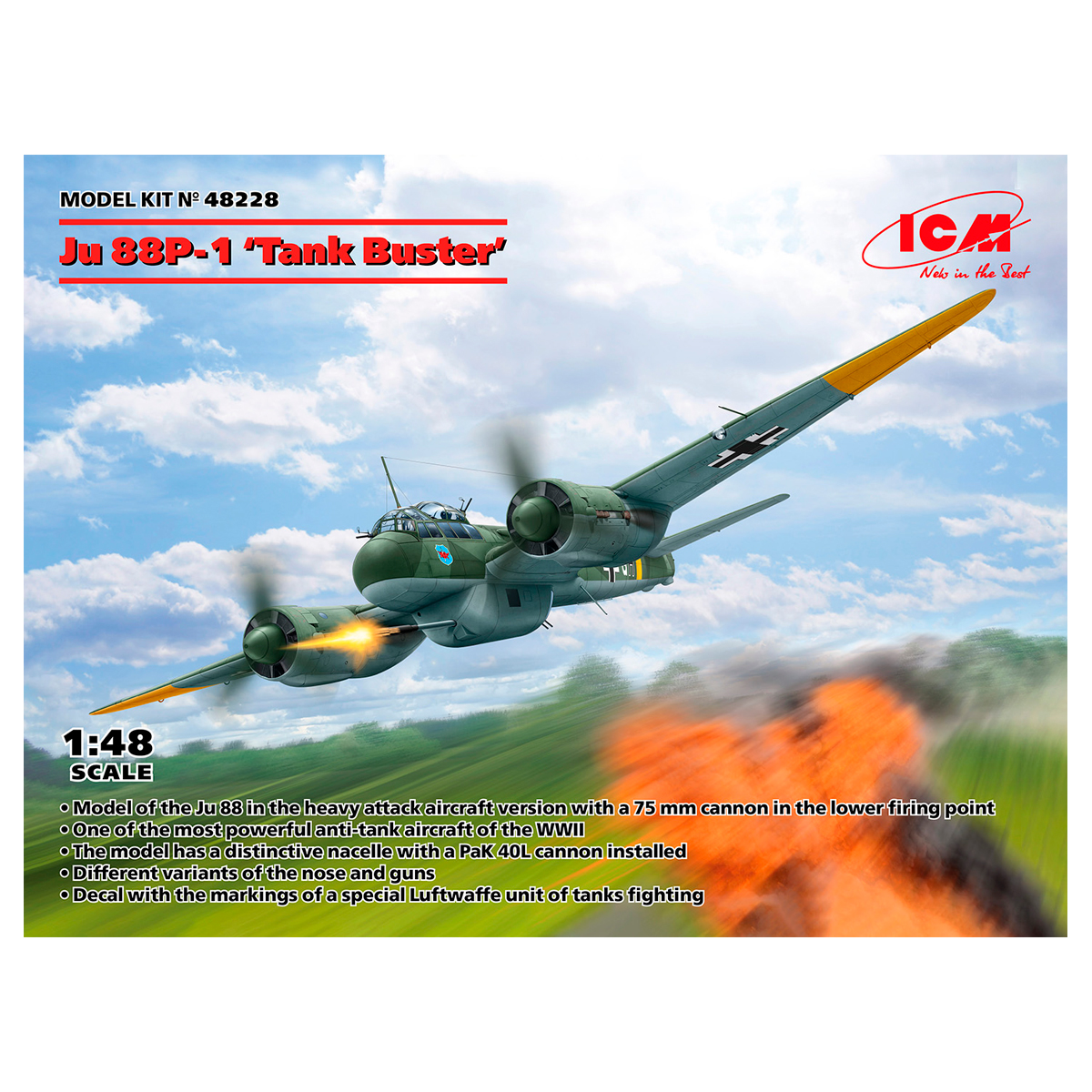
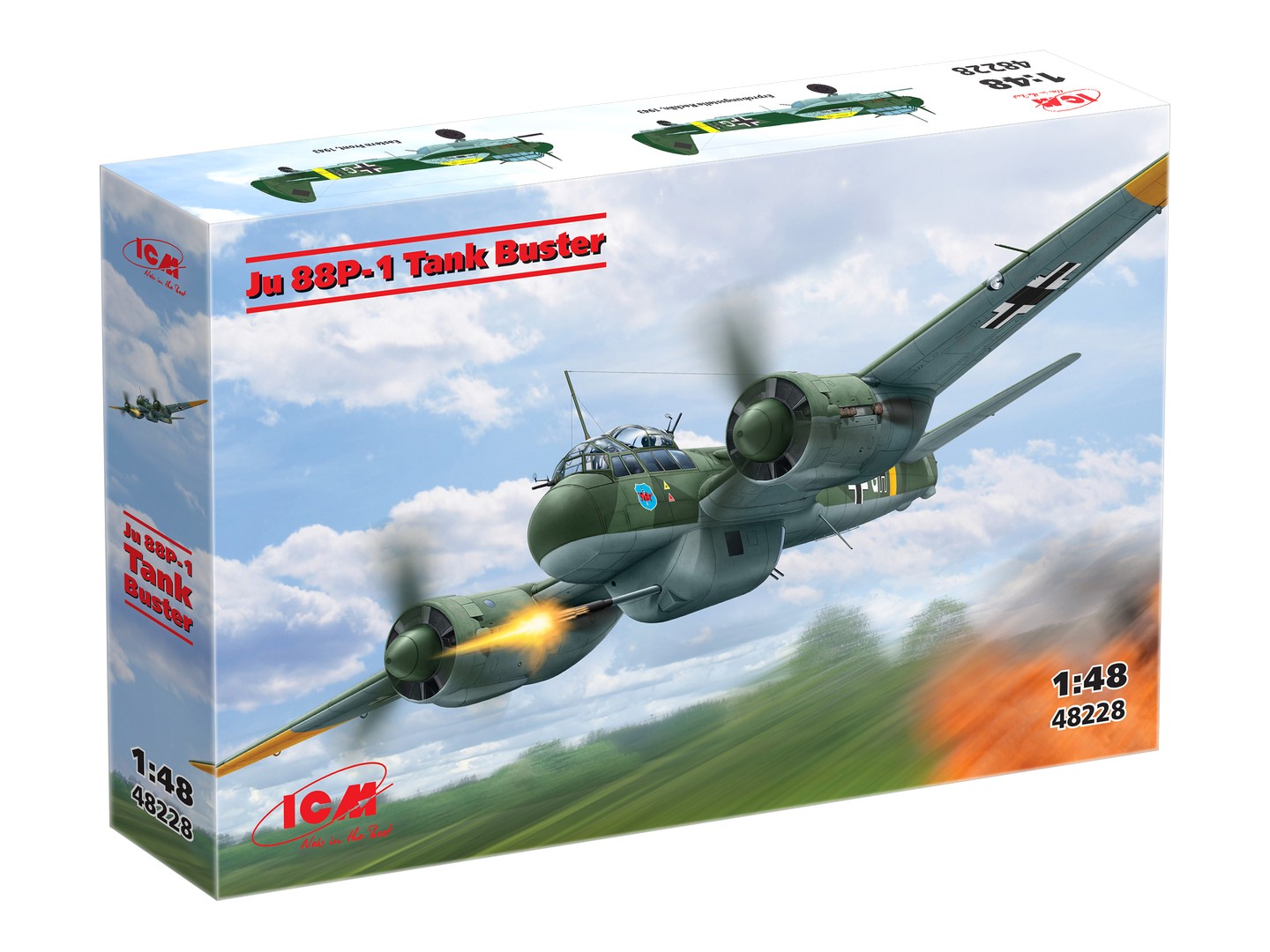

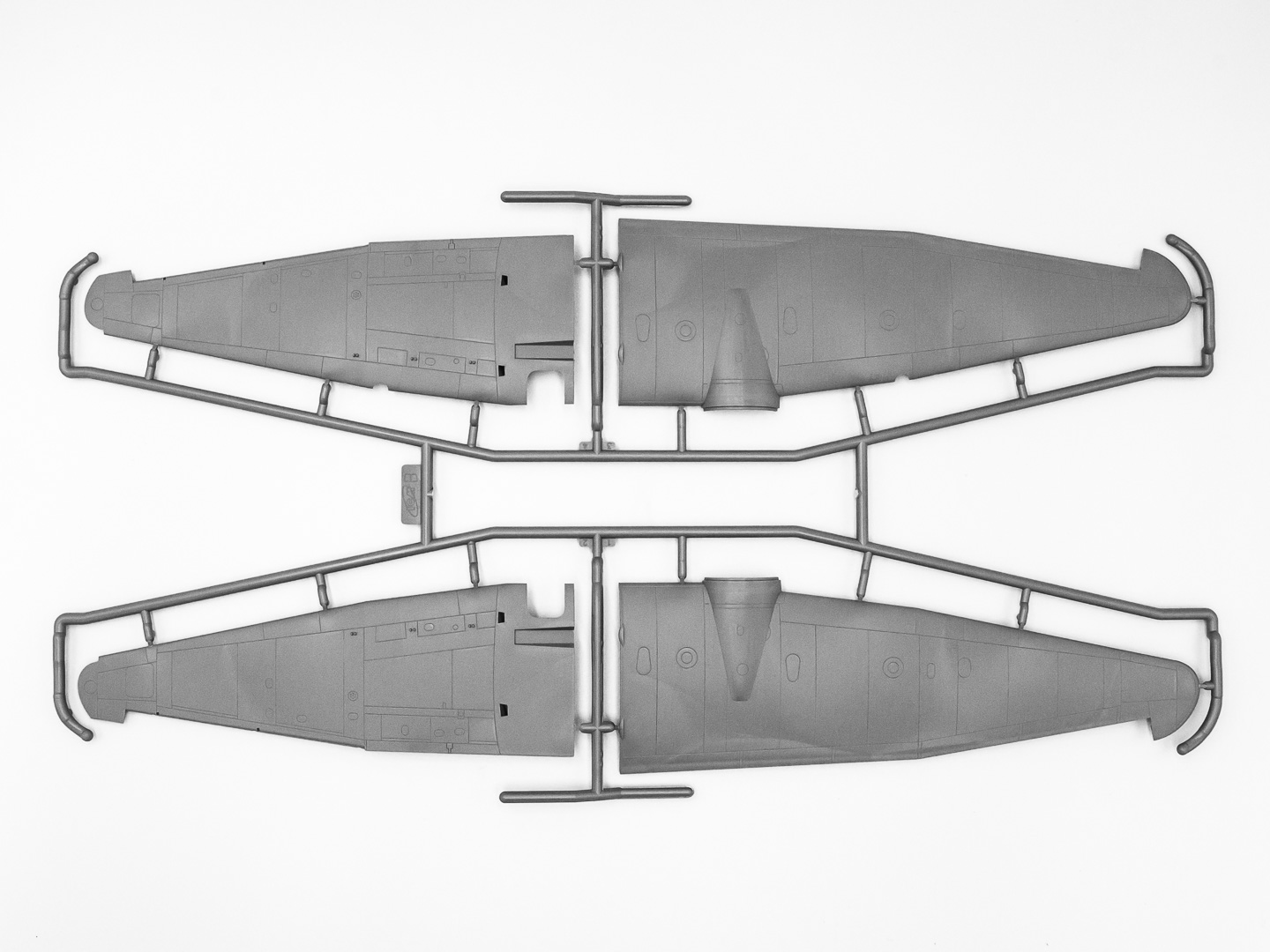
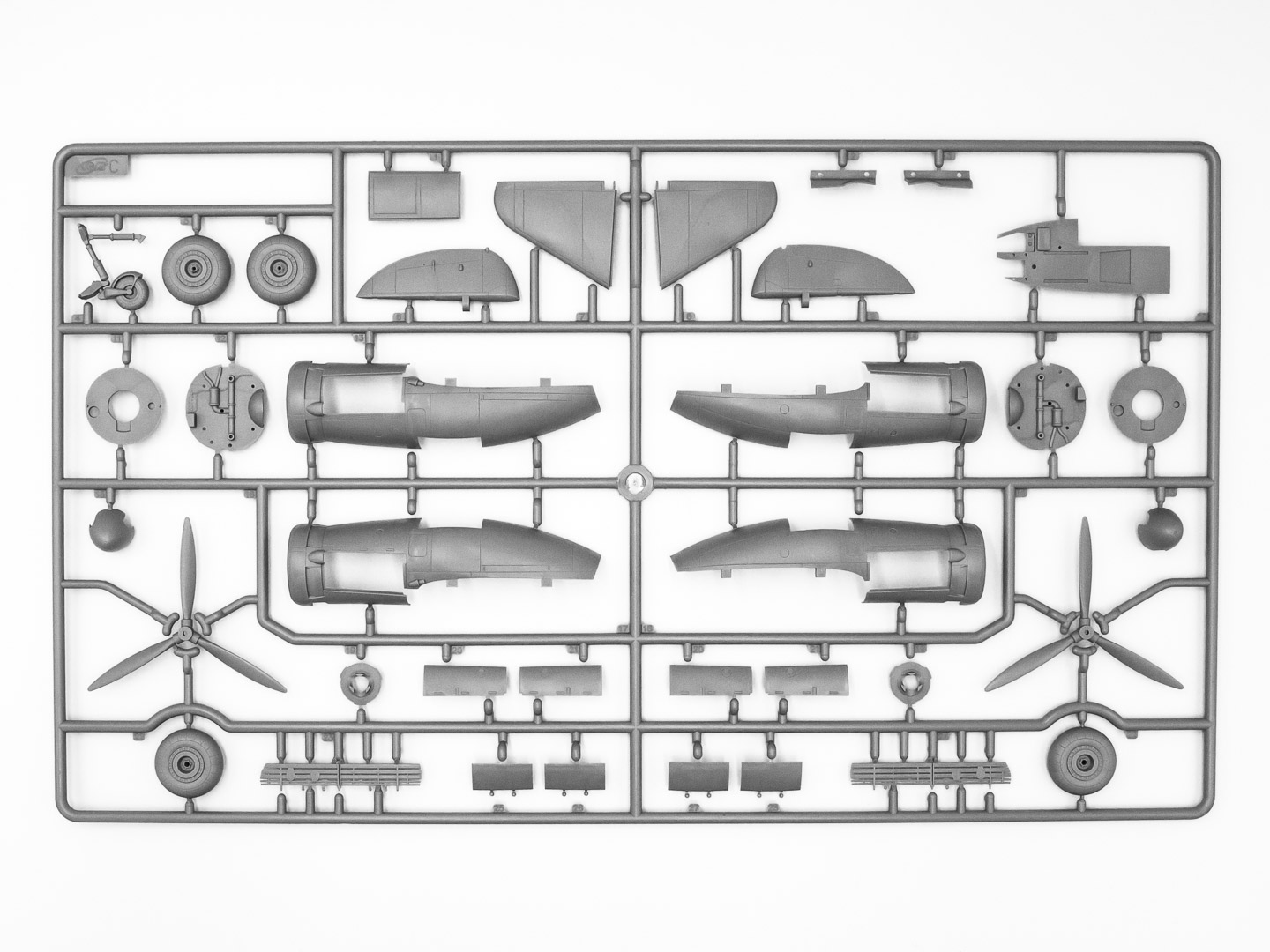
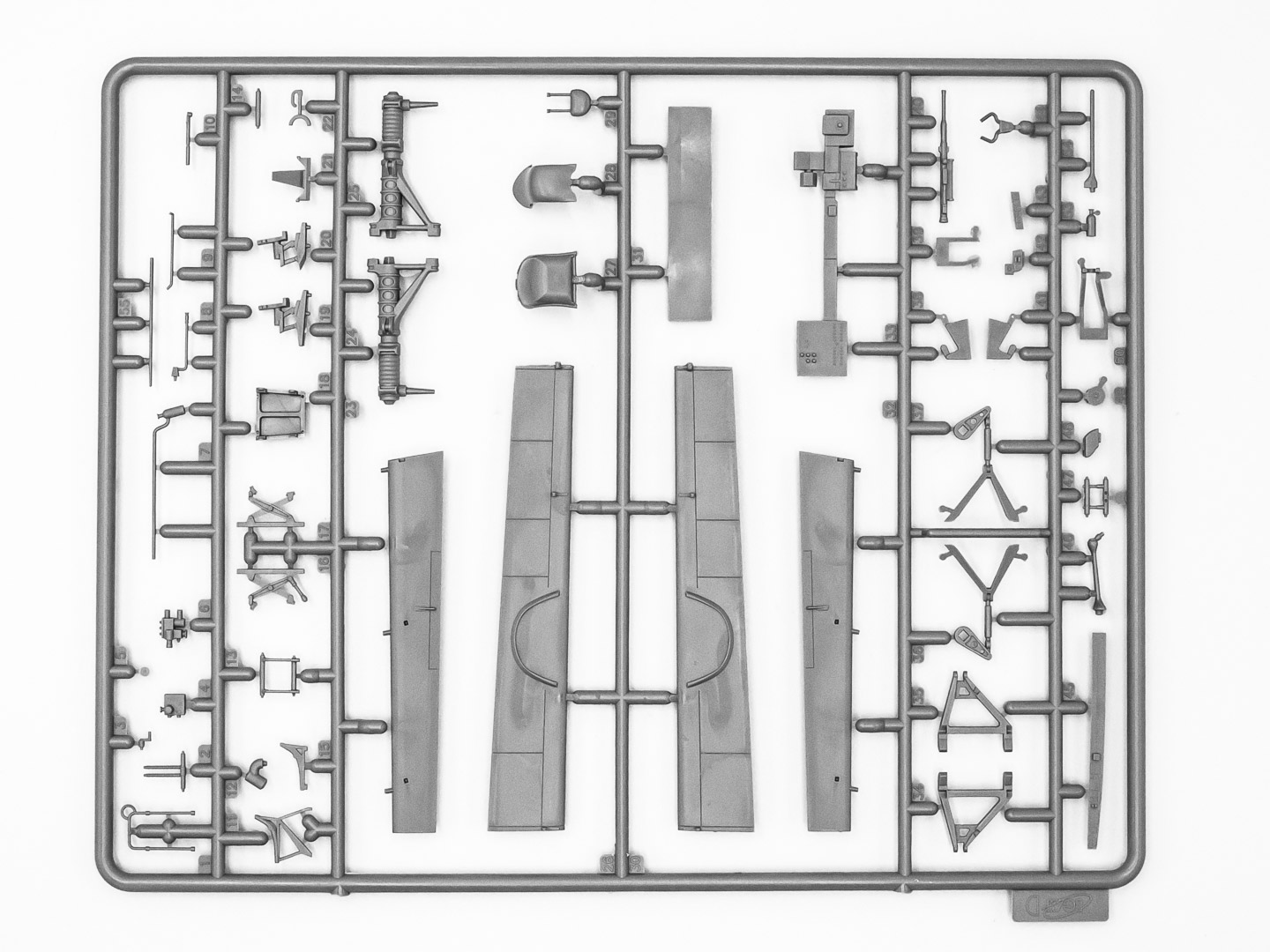

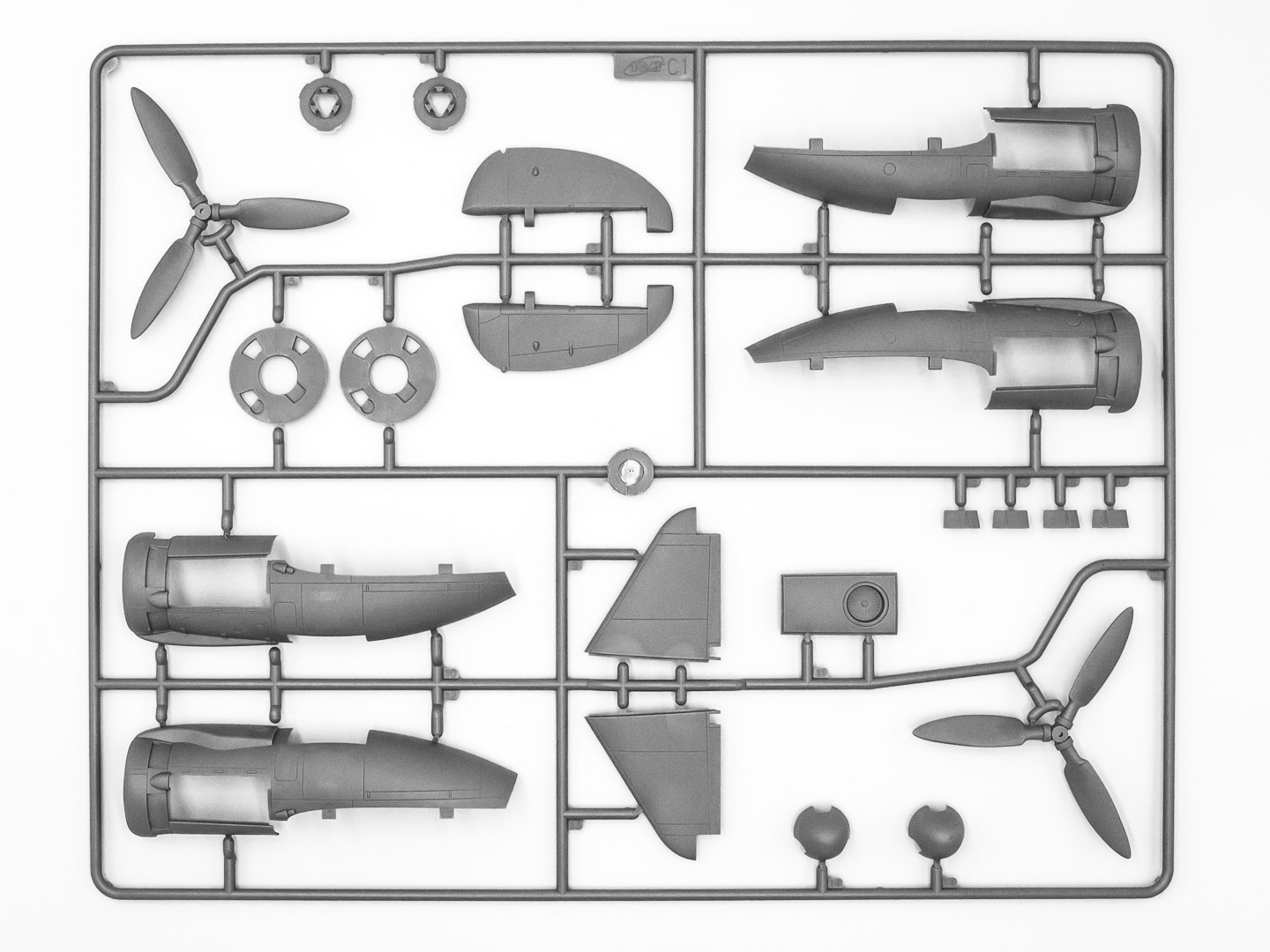

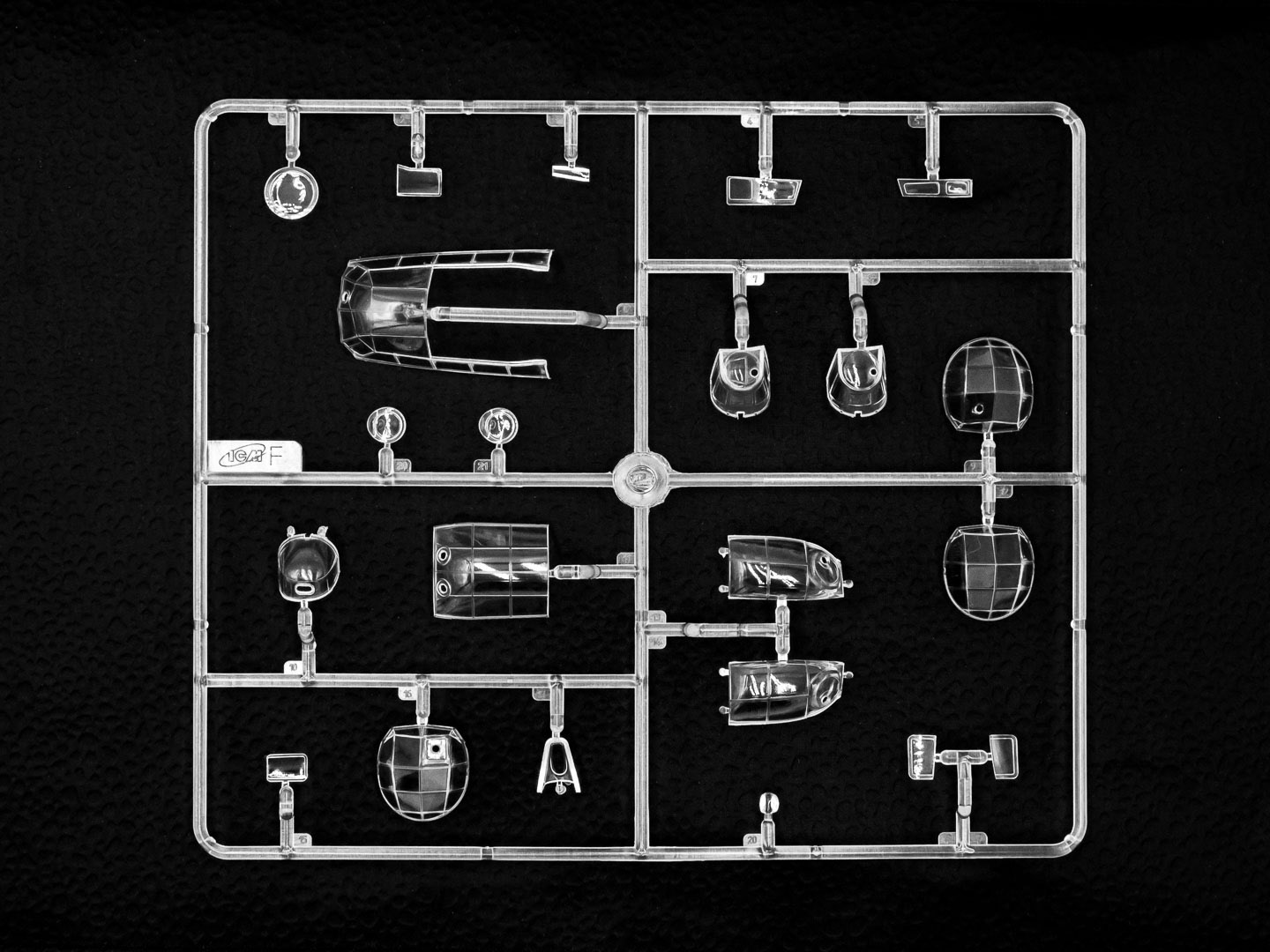
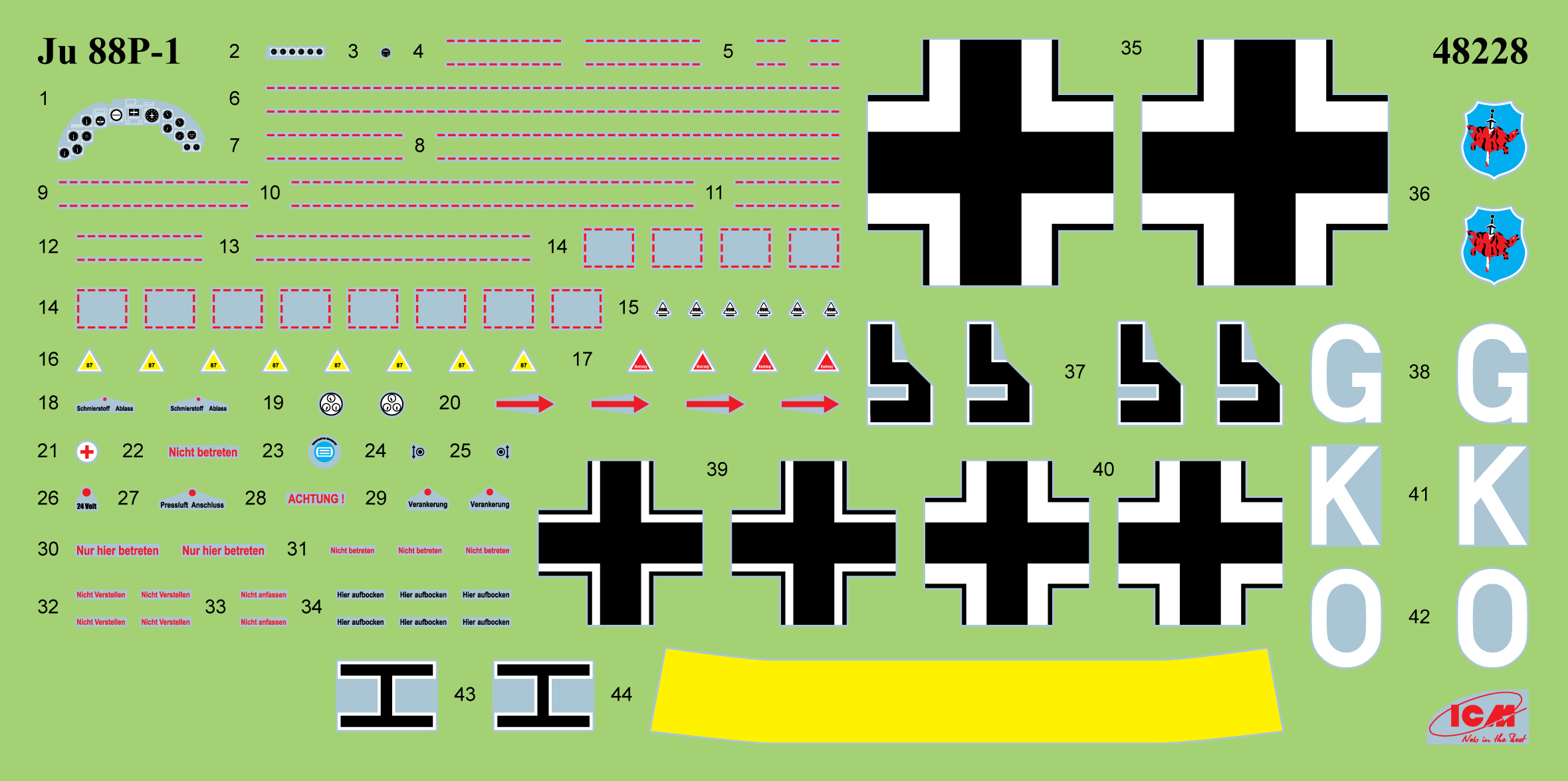
 Request of SDS product data file / Product security
Request of SDS product data file / Product security